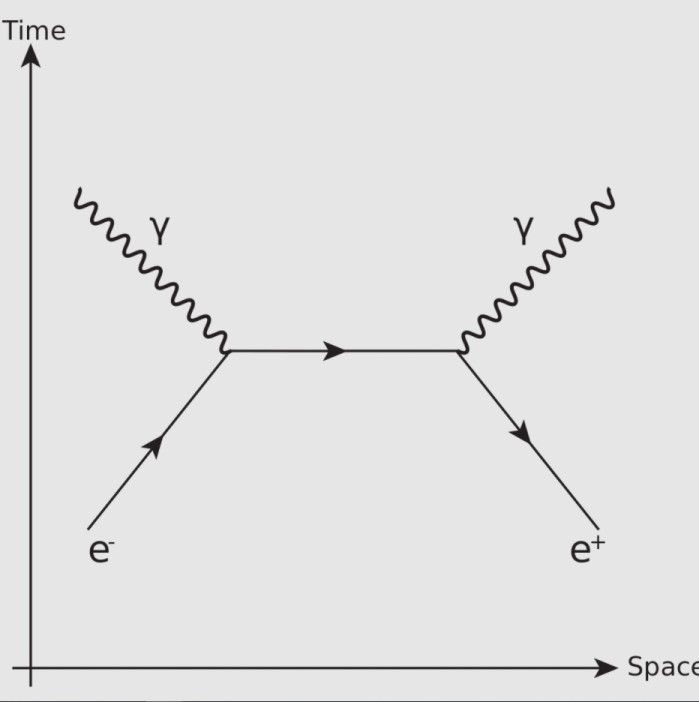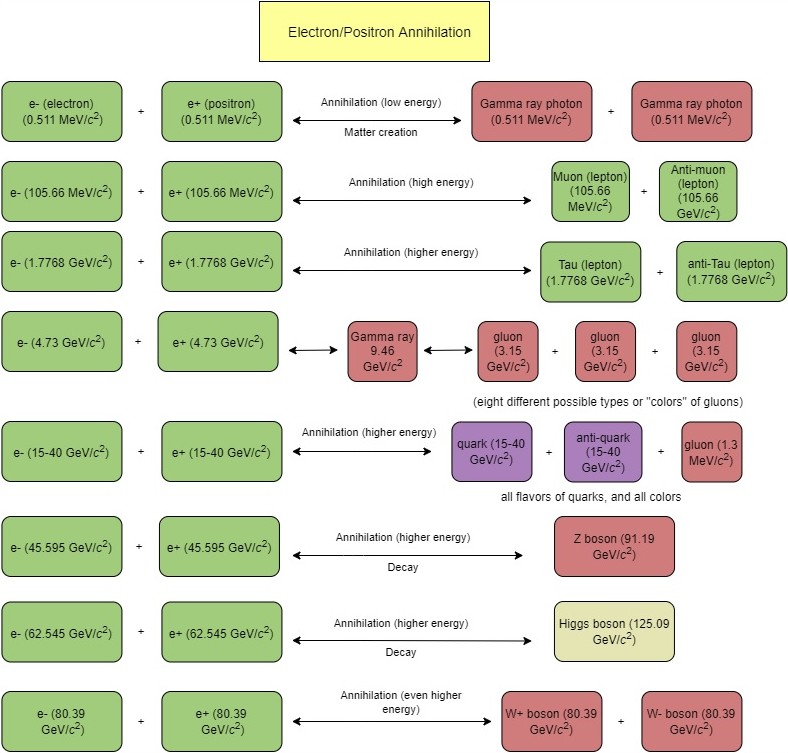The physicist and the mystics each will give different answers to that question because they look at it from different directions.Does physical reality give rise to consciousness, or does consciousness give rise to physical reality?
Upvote
0
The physicist and the mystics each will give different answers to that question because they look at it from different directions.Does physical reality give rise to consciousness, or does consciousness give rise to physical reality?
As Human Beings, we are incredibly subjective creatures. Everything we do is subjective, be it art, dance, our feelings, our expressions, inner thoughts, political views, religion, the path we take when we walk, the words we speak, the people we're attracted to, the awareness we experience when seeing a rainbow...most everything we do is subjective in nature. Everyone of us lives in a subjective world. It's one of the things that we experience as the Human experience. Now, are you saying that the Human experience is merely a "belief"? That this whole thing is an illusion?The scientific method allows for us to distinguish between what you're referring to there as 'subjective' reality, when some perceptual model is found as being untestable. They are simply called called 'beliefs'.
No.As Human Beings, we are incredibly subjective creatures. Everything we do is subjective, be it art, dance, our feelings, our expressions, inner thoughts, political views, religion, the path we take when we walk, the words we speak, the people we're attracted to, the awareness we experience when seeing a rainbow...most everything we do is subjective in nature. Everyone of us lives in a subjective world. It's one of the things that we experience as the Human experience. Now, are you saying that the Human experience is merely a "belief"?
Overall, you seem to be asking me for my model of how my brain and its environment work(?) I can tell you, (eg: as @FrumiousBandersnatch has done), but of course I'll just be giving you the way my brain makes sense of your question.dlamberth said:That this whole thing is an illusion?
I have no idea what separation your alluding to here. Can you clarify? I'm thinking that it's not only our brains that are involved in Life, but our whole being as a Human Being participates in it.The model which artificially separates our brains from what is giving our brains their stimulus, denies the evidence that our brains actually actively participate in that same process of stimulation.
The denial there, is based on a belief that there exists that separation. Its a belief because there is no objective test/results which can demonstrate that supposed separation independently of the involvement of some human mind.
Science can come up with models there, for the purposes of making predictions, but those models obviously include the participation of actively participating, scientifically thinking brains/minds which therefore, does not demonstrate the artificial separation claimed to exist.
Your projecting again.I suspect the way you're distinguishing 'illusion' in your above question, is by way of comparing our experiences, against some 'thing' that you believe exists independently from our minds that might tell us somehow, that its an illusion .. which is just your belief (for the above given reason).
Interesting. Link please.I’m afraid you have misunderstood my post.
What I stated was that momentum is not conserved in pair production in the absence of external matter.
Pair production is where the photon λ produces a positron electron pair e⁺e⁻ according to the reaction;
λ → e⁺ + e⁻
The momentum p(λ) = E/c for a photon is clearly not zero.
For momentum to be conserved in this reaction;
E/c = m(e⁺)v₁ + m(e⁻)v₂
where m(e⁺)v₁ and m(e⁻)v₂ are the electron and positron momentum at velocities v₁ and v₂ respectively, m(e⁺) and m(e⁻) are the relativistic masses.
The reaction never occurs in a vacuum as momentum is not conserved since;
E/c ≠ m(e⁺)v₁ + m(e⁻)v₂.
It requires external matter of mass m such as a nucleus so that momentum is conserved according to the equation;
E/c = m(e⁺)v₁ + m(e⁻)v₂ + mv.
where mv is the momentum of the nucleus and v is its recoil velocity.
Furthermore in pair production the momentum of the electron and positron never cancel each other out.
This can only occur if they travel in opposite directions.
It would also imply E/c = mv which is clearly false as the recoiling nucleus would gain all the photon momentum.
For the conservation of momentum to occur in the presence of the nucleus the positron and electron move in the same general direction as the incident photon and therefore do not cancel each other out.

I already did .. In different words this time: I was referring to the idea that our brains/minds somehow exist independently from some separate, so-called 'external' source of stimulii. No, our brains/minds are inseparable from the sensory stimulii they experience. Our senses are an integrated part of our minds, but we happen to regard them as being separate.I have no idea what separation your alluding to here. Can you clarify?
That should read "you're" and not: 'your' (for the second time, now).dlamberth said:Your projecting again.
I can test if 'awe' is present or not, by simply asking another person to describe what they're experiencing. If it matches my own, then its not just an individual's own subjective experience any more, is it?dlamberth said:I'll try again with this. Do I actually experience a bit of aweness when seeing a rainbow? See Double Rainbow Guy Video An aweness experience is a very subjectivity experience, that's especially true in the video. But experiences like that are very Human. I'd even say it's one of the things that makes us Human Beings. Because of it's subjectivity, does that than makes the inner experience of aweness a "belief"? If only a belief, that means it's not an actual experience and is something else all together. So I asked, is that something else an "illusion?"
I'm using conceptual language that (I hope) partinobodycular and others here are familiar with and will understand.And this is where you are being inconsistent. Objective reality is what the objective method, via tested/operational scientific models, produces. Those models are entirely conceived (and tested) by scientifically thinking minds, via the scientific method.
There is no objective evidence which allows for distinguishing between so called 'internal' and 'external' reality. Both are demonstrably, perceptual constructs formed by healthy human minds.
The scientific method allows for us to distinguish between what you're referring to there as 'subjective' reality, when some perceptual model is found as being untestable. They are simply called called 'beliefs'.
Your Feynman diagram is the two photon production for the annihilation of matter and antimatter.Interesting. Link please.
\
EDITL Never mind. I was thinking of a different reaction. When two photons collide they can create matter. But it involves a different Feynman diagram than the one presented. I was thinking of the sort of reaction that made the first matter shortly after the start of the Big Band.

I do believe that is the diagram that demonstrates such a reaction. The straight line on the upper right is a normal particle and the one in the lower right is the anti particle:
Two-photon physics - Wikipedia
It also works in reverse.Your Feynman diagram is the two photon production for the annihilation of matter and antimatter.
And I appreciate it.I'm using conceptual language that (I hope) partinobodycular and others here are familiar with and will understand.
But ultimately, misleading.I'm using conceptual language that (I hope) partinobodycular and others here are familiar with and will understand.
Actually it doesn't.It also works in reverse.
Actually it doesn't.
Electron/positron annihilation;
e⁻ + e⁺ → γ + γ
Pair production;
γ → e⁻ + e⁺
The reason why two photons are produced in the annihilation process is because it is not instantaneous and can exist in a short lived state known as positronium.
In this state the momentum of the electron and positron are zero.
In order for momentum to be conserved, two photons are created which travel in opposite directions so their total momentum is zero.
Not necessarily two worlds. The wavefunction branches into as many worlds as there are possible places for the particle to be detected. The interference pattern corresponds (roughly) to those possibilities.In the double slit experiment MWI argues that upon measurement the wave function branches into two separate worlds, both of which actually exist.
The screen is the measuring device whether there are two slits or one. And yes, when the particle goes through a single slit, its wavefunction forms a diffraction pattern, and every possible detection outcome on the screen creates a separate world branch.To simplify the experiment, what if we remove one of the slits. Then isn't the screen itself acting as a measuring device? With each point on the screen representing a different possible outcome. Thus in keeping with MWI's argument shouldn't we treat each of those possible outcomes as a real world?
It does.In other words, if, when there are two possible outcomes MWI treats them both as real, then shouldn't MWI, when there are multiple possible outcomes, treat them all as real?
First let me say, that whether anyone responds to my stupid questions or not, I really appreciate simply being allowed to ask them. I've been on "Physics Forums" for years, and they strongly discourage stupid questions. So simply being allowed to ask them, and actually having someone respond is awesome. So Thanks.Not necessarily two worlds. The wavefunction branches into as many worlds as there are possible places for the particle to be detected. The interference pattern corresponds (roughly) to those possibilities.
The screen is the measuring device whether there are two slits or one. And yes, when the particle goes through a single slit, its wavefunction forms a diffraction pattern, and every possible detection outcome on the screen creates a separate world branch.
It does.
My view is that there are no stupid questions, only honest and dishonest questions.First let me say, that whether anyone responds to my stupid questions or not, I really appreciate simply being allowed to ask them. I've been on "Physics Forums" for years, and they strongly discourage stupid questions. So simply being allowed to ask them, and actually having someone respond is awesome. So Thanks.
Again, not two branches, but as many branches as there are possible measurement outcomes at the screen (which is a lot).In the double slit experiment MWI seems to say that when we make a measurement, reality splits into two distinct yet equally real branches.
No, the weighting is not concerned with the conservation of energy but with the distribution of the available energy in relation to the probability of any particular outcome (from the Born rule). The branches are just superpositions of the universal wavefunction. The total energy of the universal wavefunction is the same after branching as before, and the energy is divided between the branches. But the question is how the energy is allocated between them, and it seems reasonable to do it according to their initial wavefunction amplitudes.On the face of it this seems to violate the conservation of energy, so MWI, or at least Sean Carroll and others get around this by "weighting" the branches.
Sure; I think that's a perfectly valid way to think of it. The branches are there all along but they're identical until that particular quantum interaction occurs, at which point they diverge. The end result is the same.This seems very, very contrived to me. I think that it would be much simpler if we just assumed that those branches were there all along, and that they existed from the very moment that the particle was emitted. They weren't somehow "created" at the point of measurement. But I would go even further than that. In Richard Feynman's "sum over histories" we're told to imagine the particle as taking every possible path from the emitter to the screen. I would argue that that really does happen, and that the particle really does take every path, even the ones that don't ultimately make it to the screen. Each possible path represents a real world.
In your link most of the mechanisms involved are fermion/antifermions virtual pairs which are created and destroyed in the two photon reactions unlike the free electron and positrons in the pair production from a single photon.I disagree, especially since I got that from an article on gamma ray to gamma ray collision. I misused the term pair production earlier myself. This is not traditional pair production. From my understanding it is the sort of every early universe collisions that ultimately led to matter. Essentially hydrogen and electrons. There is still some question on why there is a matter versus antimatter imbalance. But very early on there was no matter in the universe according to the Big Bang theory.
Two-photon physics - Wikipedia
In theory I do believe that all Feynman diagrams could go either way. But I may be mistaken.



